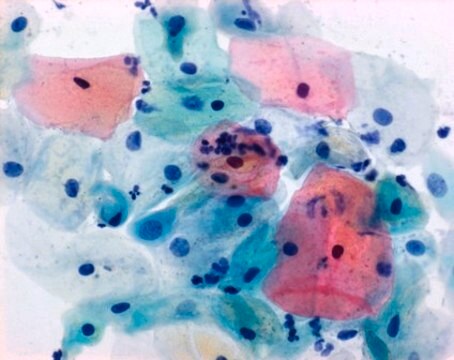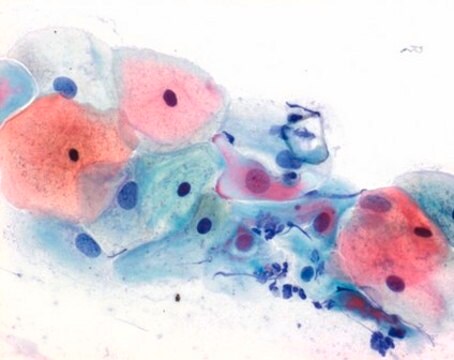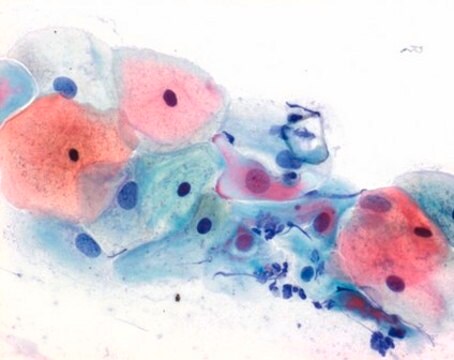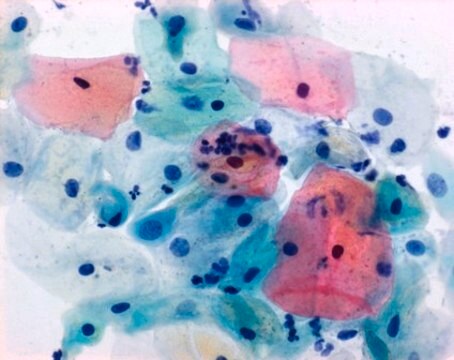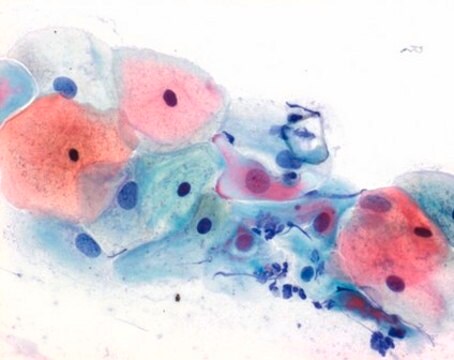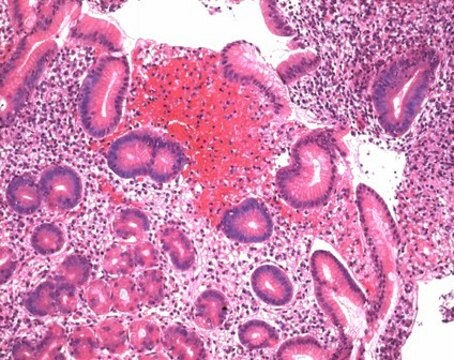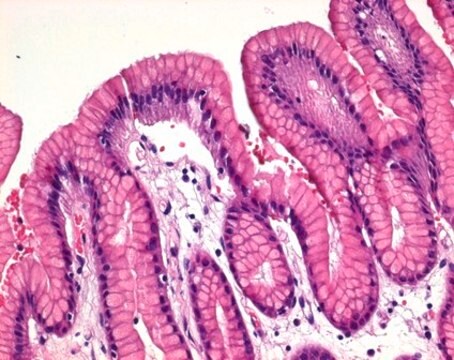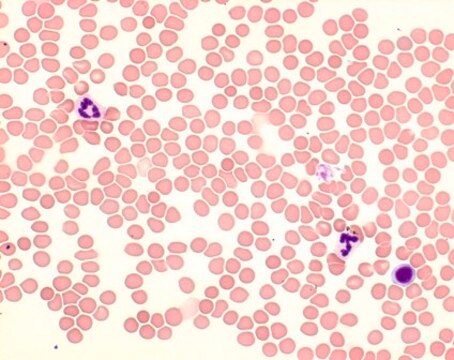1.09271
Papanicolaou′s solution 3a polychromatic solution EA 31
for cytology
About This Item
Produits recommandés
Niveau de qualité
Forme
liquid
IVD
for in vitro diagnostic use
pH
5.0-5.5 (20 °C in H2O)
Température de transition
flash point 17 °C
Densité
0.82 g/cm3 at 20 °C
Température de stockage
20-25°C
Description générale
The 500 ml bottle provides 1500 - 2000 stainings. This product is registered as IVD and CE marked. For more details, please see instructions for use (IFU). The IFU can be downloaded from this webpage.
Application
Remarque sur l'analyse
Nuclei:blue to dark violet
Cyanophilic cytoplasm:blue-green to green
Eosinophilic cytoplasm:pink
Mention d'avertissement
Danger
Mentions de danger
Classification des risques
Acute Tox. 4 Dermal - Acute Tox. 4 Inhalation - Acute Tox. 4 Oral - Eye Irrit. 2 - Flam. Liq. 2 - STOT SE 1
Code de la classe de stockage
3 - Flammable liquids
Classe de danger pour l'eau (WGK)
WGK 2
Point d'éclair (°F)
62.6 °F
Point d'éclair (°C)
17 °C
Listes réglementaires
Les listes réglementaires sont principalement fournies pour les produits chimiques. Seules des informations limitées peuvent être fournies ici pour les produits non chimiques. L'absence d'indication signifie qu'aucun des composants n'est répertorié. Il incombe à l'utilisateur de s'assurer de l'utilisation sûre et légale du produit.
EU REACH Annex XVII (Restriction List)
Certificats d'analyse (COA)
Recherchez un Certificats d'analyse (COA) en saisissant le numéro de lot du produit. Les numéros de lot figurent sur l'étiquette du produit après les mots "Lot" ou "Batch".
Déjà en possession de ce produit ?
Retrouvez la documentation relative aux produits que vous avez récemment achetés dans la Bibliothèque de documents.
Notre équipe de scientifiques dispose d'une expérience dans tous les secteurs de la recherche, notamment en sciences de la vie, science des matériaux, synthèse chimique, chromatographie, analyse et dans de nombreux autres domaines..
Contacter notre Service technique